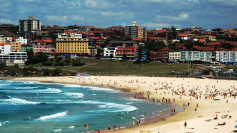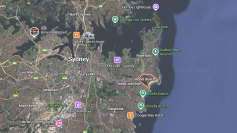The newly modernized U.S. Navy Nimitz-class aircraft carrier USS Carl Vinson (CVN-70) will transfer to its new homeport in San Diego, California August 1, taking with it Strike Fighter Squadron 147 (VFA-147), the first operational squadron operating the Lockheed Martin F-35C Lightning II stealth fighter.
The supercarrier is expected to return to its former patrol areas in the Western Pacific and Asia in 2021 after VFA-147, or the "Argonauts," become fully operational. VFA-147 was transferred to Carrier Air Wing 2 (CVW-2) from Carrier Air Wing 11 for the USS Carl Vinson's next deployment.
CVW-2 consists of four VFAs and five other fixed-wing and helicopter squadrons. Apart from the Argonauts, the other CVW-2 strike fighter squadrons onboard the Vinson are VFA-2, VFA-113, and VFA-192. They fly the Boeing F-18 E/F Super Hornet multirole fighters. CVW-2 is based at Naval Air Station Lemoore in California.
VFA-147 flies 16 F-35Cs, the F-35 variant designed for catapult-assisted take-off but arrested recovery (CATOBAR) operations from aircraft carriers. Modified for carrier operations, the F-35C features larger wings with foldable wingtip sections, and larger wing and tail control surfaces for improved low-speed control. The larger wing area allows for decreased landing speed while increasing both range and payload.
In September 2014, carrier strike groups (CSGs) of the USS Carl Vinson and the USS George Washington (CVN-73) conducted combined operations in the Western Pacific. Two years earlier, both supercarriers operated in the South China Sea and the East China Sea.
They will, if the need arises, come to the support the CSG of the USS Ronald Reagan (CVN-76), the Navy's only forward-deployed strike group.
The U.S. Navy has confirmed the Nimitz and the USS Ronald Reagan Carrier Strike Groups continue integrated exercises and operations while deployed to the South China Sea. It said both supercarriers are conducting high-end integrated exercises and bring unmatched flexibility, endurance, maneuverability, and firepower to an all-domain warfighting environment.
"Alongside like-minded regional partners, these efforts are indirect support of U.S. resolve to fly, sail and operate wherever international law allows," said Vice Adm. Bill Merz, Commander, U.S. Navy Seventh Fleet.
"The capability and flexibility of our Navy is on full display as we support Indo-Pacific security and stability. There is no better example of our regional commitment, and periodically we will bring multiple teams together in 7th Fleet to practice large-scale coordinated operations."
The USS Carl Vinson has just undergone a $367 million overhaul at the Puget Sound Naval Shipyard in Washington State that began in January 2019.






